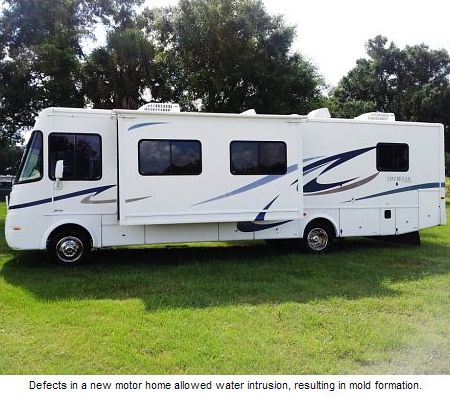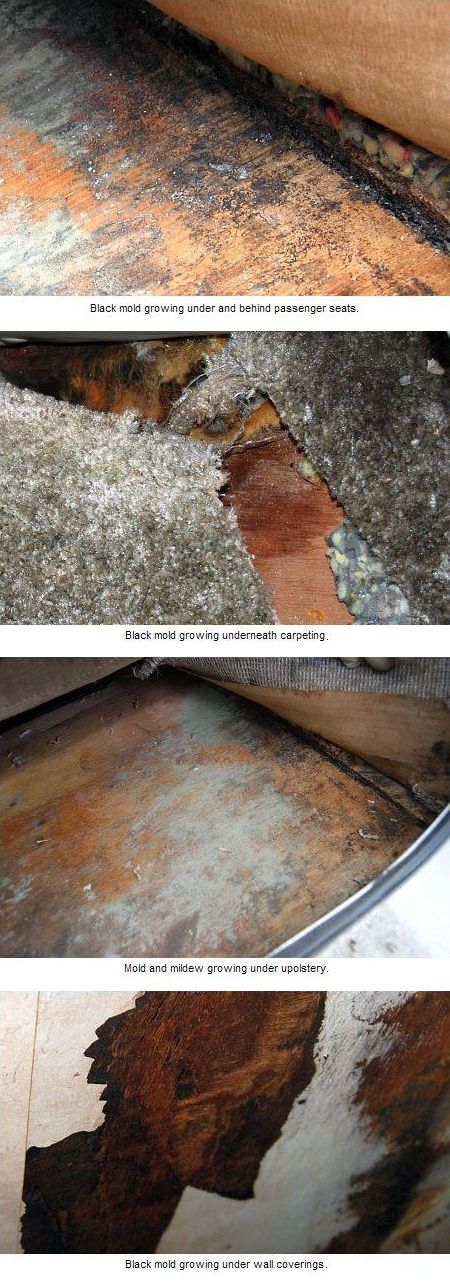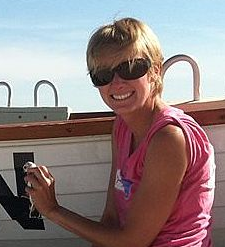William R. Sawyer, Ph.D., Toxicologist
- Diplomate, American Board of Forensic Medicine
- Diplomate, American Board of Forensic Examiners
|
| About Us
TCAS, LLC, provides a wide range of professional services including review of chemical, alcohol, pharmaceutical or radiological exposures within civil and criminal litigation matters. Dr. Sawyer has considerable expertise in matters pertaining to alcohol intoxication assessment, intentional poisoning homicides, occupational and community exposures to carcinogens, medical malpractice involving pharmaceuticals, pyrolysis products, heavy metals, organic chemicals, dioxins and drugs of abuse. Forensic toxicology and toxic exposure investigations include analytical protocol and referral of autopsy material for analyses. Environmental and occupational health risk assessments include site-specific assessments, dose measurement and causation determination. Final work products include scientific method references, method validation, forensic chain-of-custody and written reports. Reports and expert witness testimony have been provided to multiple clients in over 30 states.
|
| Please Note
We routinely work throughout North America from the Virgin Islands and the Bahamas to Alaska and have offices in the states of New York and Florida.
|
| Contact Us
Toxicology Consultants & Assessment Specialists, LLC
6450 Pine Avenue
Sanibel, Florida 33957
29 Fennell Street
Skaneateles, New York 13152
FL: 239-472-2436
NY: 315-685-2345
Toll free (U.S. & Canada):
800-308-0080
|
|
American Board of
Forensic Medicine
|
|
Issue No. 7
In this issue: Mold in a Motor Home
E-Newsletter Introduction and Invitation
Welcome to the latest edition in our new series of short, educational summaries of forensic toxicology matters taken from actual TCAS, LLC, cases over the past 26 years. Each case summary is factual; however, identifying case information has been removed unless revealed through jury verdict reports. Although interesting to read, the purpose of these case summaries is to show how the application of toxicological principles can be used in forensic matters. On occasion, we will also be releasing summaries on new toxicological studies and regulations.
TCAS, LLC, is sending this newsletter to all our past and present clients with the hope that it is of value in their professional endeavors.
In the event you have an interesting case you would like to discuss, please feel free to call or email us for a prompt, confidential teleconference.
Sincerely,
Dr. Sawyer
|
Mold in Motor Home Causes Aspergilloma
This case study illustrates the role of toxicological weight-of-evidence (WOE) in a case involving exposure to mold inside a motor home. It also illustrates how analytical measurements and medical history can be considered as evidential in a toxicological analysis.

Bumpy Panels and Spongy Floors
Shortly after purchasing a new motor home, the owner noticed wind noise and water leaks along the doors and windows as well as interior panels which had become "bumpy" and discolored. At one point upon opening the glove box, the owner found mildewed vehicle paperwork floating in water. Subsequent repairs were made by the dealer on several occasions. The owner later took the vehicle on a trip to Florida and left it parked for a month unattended. Upon returning, mushrooms and mold were found growing in numerous locations. The dealer again supposedly made repairs. Later, upon noting a "musky" smell and removing the interior panels, the owner found one entire wall covered with black mold. Peeled-back carpets revealed a black and spongy floor. The owner attempted to clean and remove the mold without respiratory protection and continued to reside in the vehicle while in Florida.
Several months later, a suspicious spot on the owner's lung was discovered during a regular medical scan. Due to a family history of lung cancer, physicians opted to excise the growth surgically. The pathology report confirmed that the spot was an Aspergilloma (fungus ball) growing on the lung. Independent expert sampling of the vehicle's air measured an Aspergillus count of 5,020 cfu (colony forming units) per m3 and a Stachybotrys count of 78 cfu/m3. These very high spore concentrations were obtained "post-remediation."
 Causation Methodology
The owner filed a lawsuit for damages
alleging negligence of both the manufacturer and the repair shop(s). Dr. Sawyer was retained to perform an independent causation assessment as an expert toxicologist for the plaintiff. Defendants contended that the plaintiff's lung growth was not an Aspergilloma and/or was spontaneous and not related to the mold in the motor home. Defendants noted plaintiff's demonstrable medical history with respect to respiratory infections and attempted to characterize the malady as "merely the latest in a pattern." They also contended that the particular mold species in the vehicle could not have caused the Aspergilloma for which plaintiff had been diagnosed. They further objected to the methodology used to determine the type(s) and quantities of mold present - and moved to strike the results.
A pertinent issue with respect to causation in this matter was the fact that air sampling was conducted long after exposure and only as a "snapshot" in time rather than samples acquired over multiple days or weeks during the exposure interval. Additionally, spores can heavily concentrate in small, undisturbed areas and may appear far less numerous in larger-volume locations. Thus, air concentration alone was insufficient to establish specific causation.
The Role of Weight-of-Evidence
Specific causation is more difficult to demonstrate than general causation. The toxicologist must satisfy a stringent set of conditions before a causative conclusion is reached. Dr. Sawyer elected to apply a weight-of-evidence (WOE) approach to his assessment using the toxicological methodology developed by Sir Bradford Hill for inferring causation. In practice, this amounts to exhaustive research and a process of elimination, achieved by thoroughly reviewing several types of evidence relating to the documented effects of the plaintiff's exposure and medical history as well as all of the available experimental and human epidemiological literature.
Dr. Sawyer consulted the U.S. indoor air quality standards. He performed a thorough review of the available toxicological journals and relevant peer-reviewed studies (upon which much of the regulatory guidance is based). He assessed plaintiff's medical history and reviewed chest x-rays over a period of years during which he established that plaintiff's medical treatment had resulted in a condition called neutropenia, a compromising of the immune system. In his final report, Dr. Sawyer stated:
- The generally-accepted, peer-reviewed literature cites immunodeficiency and neutropenia as major risk factors for invasive pulmonary aspergillosis. The risk of pulmonary aspergillosis correlates strongly with the duration and degree of neutropenia.
- Plaintiff had been prescribed corticosteroids (Prednisone) for treatment of a rotator cup injury during the period of exposure. Various toxicological studies cite three weeks of steroid therapy as a risk factor for aspergillosis.
-
Measured levels of Aspergillus and Stachybotrys in the motor home air (5,020 cfu/m3 and 78 cfu/m3 respectively) were in the extreme upper range of any values reported in the toxicological literature. Concentrations of spores can accumulate within a small, enclosed area particularly in the absence of air movement. The Indoor Air Quality Association2 recommends that no individual fungal organism should contribute more than 50 cfu/m3.
- The timeline associated with the circumstances was in every respect consistent with plaintiff's exposure history and testimony (e.g. the discovery of mold, the supposed vehicle repairs, the frequency of exposure, the calculated dose and the subsequent discovery of the Aspergilloma during a routine medical exam).
- A thorough review and investigation of other possible causes either ruled them out entirely or rendered them so unlikely as to be safely discounted in this matter.
Dr. Sawyer's report concluded that the available toxicological evidence was entirely consistent with plaintiff's testimony. He presented a specific causative opinion that plaintiff had been afflicted with Aspergilloma through repeated exposure to concentrated toxic mold spores in an enclosed indoor area during the same period of time that plaintiff had been rendered more susceptible to such infection through regular corticosteriod treatments and immunodeficiency.
Daubert Challenge
Defendants took strong exception to Dr. Sawyer's report and filed a motion to exclude it under the Daubert Standard which provides rules of evidence governing the admissibility of expert witness testimony during legal proceedings. Defendants' Motion To Exclude contended that Dr. Sawyer's methodology was flawed and his conclusions unreliable. It further contended that Dr. Sawyer's testimony should be excluded because he did not perform any independent testing of the motor home. However, many years had elapsed between the first discovery of mold growth and Dr. Sawyer's retention as plaintiff's expert. Since "independent testing" would have been impossible, Dr. Sawyer relied on earlier testing performed by a CIH (Certified Industrial Hygienist).
Defendants had retained an industrial engineering expert who specialized in molds and fungi. He contended that (a) all of the mold in the motor home "might" have been some other species and further contended that (b) there can be no "potential" causative relationship (despite the measured levels of mold spores in the air samples); therefore, none of plaintiff's expert reports (including Dr. Sawyer's) could be considered to be scientifically reliable - and should, therefore, be excluded.
Dr. Sawyer pointed out in his rebuttal that it was not his opinion that plaintiff had been infected with invasive Aspergillosis, but rather was hosting a species of Aspergillus within her lung. With regard to defendants' contentions, Dr. Sawyer noted that defendants' own expert had published materials to the effect that (a) Aspergillus and Penicillium species are two of the most ubiquitous fungi known, (b) it is common for both species to be present indoors, (c) high concentrations of airborne spores can exist in contaminated indoor areas, (d) Aspergillus spores can pose health risks when inhaled, and (e) they are known to cause respiratory symptoms and diseases. Dr. Sawyer noted that it was not possible to reconcile these facts with expert testimony that "...there can be no potential causative relationship." This self-contradiction strongly suggested a lack of objectivity on the part of defendants.
Dr. Sawyer further noted in his rebuttal that the factors cited by regulatory agencies3 with regard to indoor air quality and building dynamics closely mirrored plaintiff's own exposure. Dr. Sawyer additionally noted that all causative factors relevant to the circumstances had been addressed in his assessment. These included:
- Strength of association between the exposure and a particular health effect
- Specificity of the association
- Consistency of the association
- Dose-responsiveness of the chemical
- Biological plausibility of the causal connection
- Coherence of the association
- Temporality (time relationships)
- Relevant experimental data
Summary
Dr. Sawyer presented the court with an objective opinion of specific causation through application of weight-of-evidence and the Bradford Hill method of causative determination. In its ruling, the court noted that defendants' own expert stated that there is currently no reliable method to determine the level of airborne toxins in an indoor environment - but Dr. Sawyer's opinions were not based solely on air samples. With respect to Dr. Sawyer in particular, the court stated:
|
"Dr. Sawyer's analysis and opinions establish specific causation and are sufficiently supported by scientific data and evidence in the record. Before concluding that plaintiff's exposure to the levels of toxic mold in the vehicle is consistent with the diagnosis of aspergilloma, Dr. Sawyer detailed plaintiff's pertinent medical history, weakened immune system, family's medical history, and history of hospitalizations and cigarette smoking. He also noted that aspergillus grows on organic debris and occurs naturally in some outdoor and hospital environments. It is reasonable to infer that Dr. Sawyer took into account, and ultimately ruled out, these possible factors before concluding that the high levels of aspergillus, penicillium, and stachybotrys found in the vehicle caused the medical condition. ... Dr. Sawyer noted that the levels of aspergillus found in the vehicle "are in the extreme upper range of any values ever reported in the literature for living quarter environments." ... [therefore] defendants' motion to preclude plaintiff's expert is DENIED."
|
The court's written ruling characterized defendants' objections as "unpersuasive." The inclusion of Dr. Sawyer's toxicological assessment and testimony significantly undermined defendants' credibility and position in litigation. Defendants elected to settle the case ahead of a likely jury verdict in favor of plaintiff.
Notes and References
- Perfect, JR, et al., "The impact of culture isolation of Aspergillus species: a hospital-based survey of aspergillosis," 2001, Clinical
Infectious Diseases, Vol. 33, pages 1824-1833.
Indoor Air Quality Association, Inc., "Recommended guidelines for indoor environments," IAQA01-2000, Longwood, Florida.
New York City Department of Health and Mental Hygiene, "Guidelines on assessment and remediation of fungi in indoor environments," Appendix A, November 2008
|
Meet the Firm
 Dr. William Sawyer Dr. William Sawyer is a professional toxicologist with a doctorate in toxicology from Indiana University School of Medicine. He is a diplomate of the American Board of Forensic Medicine and has more than 26 years of extensive experience in public health and forensic toxicology with specialized expertise in causation analyses (for plaintiff and defense) involving alcohol, drugs-of-abuse, pharmaceuticals, herbal products, dioxins, solvents, heavy metals, crude oil, radionuclides/NORM and other substances. Dr. Sawyer has testified at trial and/or deposition in more than 30 states including NY, MA, CT, PA, RI, NH, DE, NJ, WV, VA, NC, SC, GA, FL, AL, MS, LA, AR, MO, KY, IN, IL, WI, MI, OH, MN, MT, WA, CA, TX and OK.
As a skilled scientist and communicator in the area of toxic tort, Dr. Sawyer provides services to governmental agencies, corporations and select plaintiffs or defendants. Dr. Sawyer currently serves as the Chief Toxicologist for TCAS, LLC, and also has been an Assistant Professor (adjunct) for 23 years with the Department of Medicine, Upstate Medical University, Syracuse, New York. Dr. Sawyer has approximately 14 years experience as a licensed clinical and environmental laboratory director in several states.
Dr. Sawyer is a distance swimmer for the Gulf Coast Swim Team and recently completed the "Swim Around Key West" race in just under six hours. He is also a triathlete with the distinction of being a four-time Ironman. He loves to fish and SCUBA dive in northern New York State and the Gulf of Mexico.
 Jennifer Clark Jennifer Clark (Jen) began working with Dr. Sawyer in 2007 after spending the previous 18 years as a full-time mom. With a background as a legal assistant prior to the birth of her two daughters, Jen spends a considerable amount of her time performing research for active TCAS, LLC, cases. Not only does she have a special ability to ferret out information, she also has excellent grammatical skills which she applies to communications and report preparation. Jen loves a challenge and the fact that no two days at TCAS, LLC, are the same!
When not being an honorary toxicology investigator, Jen enjoys gardening, camping, reading and solving jigsaw puzzles. She is also a huge fan of the Adirondack Mountains of upstate New York and spends several weeks each summer exploring the woods and lakes with her husband, Jim, and golden retriever, Gracie.  Michelle Stantial began working with Dr. Sawyer in May 2014. She is currently an M.S. candidate at the State University of New York - College of Environmental Sciences and Forestry (SUNY-ESF) focusing on Fish & Wildlife Biology and Management. Her graduate research project examines piping plover flight behavior during the breeding season. She has been working with nesting piping plovers since 2008 with several organizations including the U.S. Fish and Wildlife Service, the Massachusetts Audubon Society, and the Tuckernuck Land Trust. During the winter of 2010/2011, Michelle had the privilege of acting as a crew leader for Virginia Tech on a project assessing the impacts of the Gulf oil spill on wintering piping plovers. Because of this experience, Michelle has a special interest in environmental toxicology, examining the impacts of environmental hazards to humans and wildlife. When not spending time looking at birds, some of her favorite things in life are spending time in her garden, listening to NPR, knitting up a storm and playing her harmonica exceptionally loud!
 Carol Sawyer Carol Sawyer serves as the bookkeeper for TCAS, LLC. By training, she is a dental hygienist and graduate from Indiana University School of Dentistry. She also has prior training and work experience in an accounting firm as a file room clerk and has managed TCAS, LLC's records since its inception in 1989. Carol enjoys preparing specialty foods, volunteering in her church and community, visiting barrier island beaches, reading and just being outdoors.
Support Staff |
|